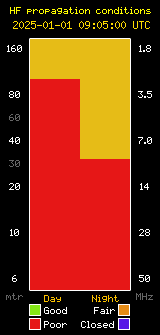Technical Mentoring and Elmering Net – January 28, 2016
The audio archive can best followed by downloading the .mp3 file for the appropriate date here and listening with the media player of your choice. You can move the progress slider forward or backward to the subject of interest to you. We had another good net tonight with 12 check-ins including net control (Ken – KA6KEN), and some chat room visitors! Tonight’s subjects included: Amateur Radio Mesh Networks – What are they and how do they work? HF Antenna building using a rain gutter. Dipole Antennas. Baluns. Why is 455 the most used IF? Monitoring of cargo ships and tracking vessels in the Santa Barbara harbor. Tune in to the SBARC TM&E Net next Thursday at 8:00 PM (2000 Hrs) and see what interesting questions will arise or ask some of your own! All club members and visitors are encouraged to check in to the TM&E net each week and join in with questions and /or answers to and contribute the knowledge of new and seasoned amateur radio operators alike.









